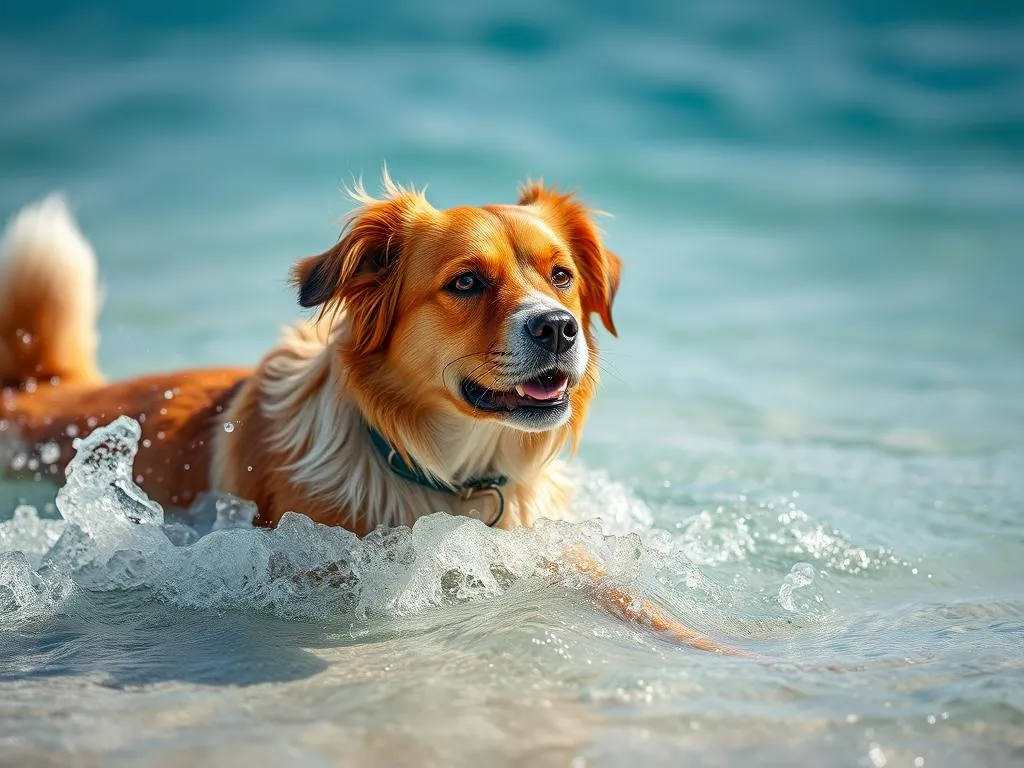
Introduction
Swimmer’s itch, medically known as cercarial dermatitis, is a skin condition caused by an allergic reaction to certain parasites that typically infect birds and mammals. While it is commonly associated with humans, many dog owners may wonder, can dogs get swimmer’s itch? The answer is yes; dogs can indeed suffer from this condition, especially if they frequent water bodies where the parasites thrive. Understanding swimmer’s itch is crucial for dog health care, as it can lead to discomfort and secondary infections if not properly managed. In this article, we will explore the nature of swimmer’s itch, its symptoms, treatment options, and preventive measures to keep your furry friend safe.
Understanding Swimmer’s Itch
What is Swimmer’s Itch?
Swimmer’s itch is caused by tiny parasites known as cercariae, which are the larval forms of certain flatworms. These parasites typically inhabit freshwater lakes and ponds. When these cercariae penetrate the skin of a host, like a dog or a human, they can trigger an allergic reaction, leading to inflammation, itching, and a rash. In dogs, this often occurs after swimming or wading in contaminated water, particularly in areas populated by infected birds, such as ducks or geese.
Symptoms of Swimmer’s Itch in Dogs
The symptoms of swimmer’s itch in dogs can vary in duration and severity. Common signs to look for include:
- Intense itching: Your dog may scratch excessively, leading to further irritation.
- Rash: Red, raised patches of skin can appear, often resembling hives.
- Lesions: In some cases, open sores may develop due to scratching.
These symptoms can last for several days to weeks. It’s essential to distinguish swimmer’s itch from other skin conditions, such as allergies or fleas, to ensure your dog receives the correct treatment.
Risk Factors for Dogs
Certain environmental factors can increase the likelihood of dogs contracting swimmer’s itch. Key risk factors include:
- Water Bodies: Lakes, ponds, and other freshwater areas where infected birds are present are common hotspots.
- Seasonality: Swimmer’s itch is more prevalent in warmer months when dogs are more likely to swim.
- Breed Predispositions: Some breeds may be more prone to skin issues, increasing their risk.
- History of Previous Infections: Dogs that have had swimmer’s itch before may be more susceptible to future cases.
Diagnosis and Treatment
How is Swimmer’s Itch Diagnosed?
If you suspect that your dog has swimmer’s itch, it’s essential to consult with a veterinarian. A thorough examination and history-taking will help the vet assess the situation. Diagnostic tests, such as skin scrapings, may be performed to rule out other skin conditions like mange or allergies. Understanding the specific cause of your dog’s symptoms is crucial for effective treatment.
Treatment Options for Swimmer’s Itch
Treatment for swimmer’s itch typically involves a combination of home care and veterinary intervention:
- Home Care: Bathing your dog with lukewarm water and a gentle shampoo can help soothe the skin. Avoid using harsh soaps, as they can further irritate the skin.
- Topical and Oral Medications: Your veterinarian may recommend antihistamines or corticosteroids to alleviate itching and inflammation. In more severe cases, oral medications may be necessary to manage symptoms.
- When to Seek Veterinary Intervention: If your dog’s symptoms worsen or do not improve with home care, it is crucial to return to the vet for further evaluation and treatment.
Home Remedies and Preventative Measures
While home care can be beneficial, some natural treatments may also help manage symptoms. These include:
- Oatmeal Baths: An oatmeal bath can provide immediate relief for itchy skin.
- Coconut Oil: Applying coconut oil can help moisturize and soothe irritated skin.
- Aloe Vera: This natural remedy is known for its soothing properties and can help reduce inflammation.
Preventing secondary infections is essential, so monitor any lesions for signs of infection, such as increased redness or pus.
Preventing Swimmer’s Itch
Environmental Precautions
To help prevent your dog from developing swimmer’s itch, consider these environmental precautions:
- Avoid Contaminated Water Bodies: If you know that a particular lake or pond has a history of swimmer’s itch, it’s best to avoid it altogether.
- Understand Local Wildlife: Be aware of the types of birds in your area that may carry the parasites responsible for swimmer’s itch.
- Seasonal Considerations: During peak seasons for swimmer’s itch, limit your dog’s exposure to water bodies.
Grooming and Skin Care
Regular grooming is vital for maintaining your dog’s skin health. Here are some practices to consider:
- Regular Grooming: Brushing your dog’s coat can help remove debris and prevent matting, which may trap moisture and lead to skin issues.
- Moisturizing: Using a dog-safe moisturizer can help maintain the skin’s barrier and prevent dryness.
- Recommended Dog Shampoos: Look for shampoos specifically designed for dogs with sensitive skin or those containing oatmeal or aloe.
Vaccinations and Overall Health Care
While vaccinations won’t prevent swimmer’s itch, they play an essential role in overall skin health. Regular veterinary check-ups can help identify any skin issues early on. Additionally, a balanced diet rich in omega fatty acids can promote a healthy coat and skin, making your dog more resilient against various skin conditions.
Other Skin Conditions in Dogs
Common Skin Issues to Be Aware Of
While swimmer’s itch is a specific condition, dogs can suffer from various other skin issues. Here’s an overview of some common conditions:
- Allergies: Environmental or food allergies can lead to itching, redness, and swelling.
- Hotspots: These are localized areas of inflammation and infection, often caused by self-trauma.
- Mange: Caused by mites, mange can lead to severe itching and hair loss.
Each of these conditions has its symptoms and treatment options, so recognizing them early can make a significant difference in your dog’s health.
When to Consult a Veterinarian
Knowing when to consult a veterinarian is crucial for your dog’s health. Signs that require immediate veterinary attention include:
- Severe itching: If your dog is scratching excessively, leading to bleeding or open sores.
- Persistent rash: If the rash does not improve with home care or worsens over time.
- Signs of infection: Look for increased redness, swelling, or discharge from lesions.
Regular skin assessments can help identify issues before they become severe, allowing for timely intervention.
Conclusion
Understanding swimmer’s itch and its implications for dog health care is vital for every pet owner. By being aware of the symptoms, risk factors, and treatment options, you can help ensure your dog’s comfort and well-being. Regular grooming, environmental precautions, and a proactive approach to skin health are essential to preventing this condition. Ultimately, a healthy lifestyle, coupled with proper care and attention, will enable your dog to lead a happy and itch-free life.









